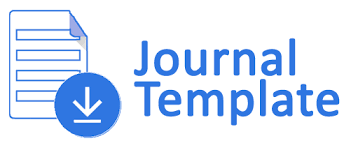Analisis Isi Modul Pengajaran Membaca Berbasis Literasi Kritis Bagi Mahasiswa Calon Guru
DOI:
https://doi.org/10.29407/pn.v8i2.17925Keywords:
modul pengajaran membaca, literasi kritisAbstract
The aim of this article is to analyze the content of teaching reading module for student teachers, so they have ability to proceed, analyze and reflect an information through teaching reading always by seeing a text not only for the content, but it also affect students’ behavior to their environment. This is qualitative research with descriptive type. In the beginning of the research, it is done by observing to get the information about students’ problems in implementing critical literacy through reading texts. Besides, researchers will do interview to reading lecturers to know how reading materials had been implemented in Critical Reading class. After that, the reading module was delivered to reading expert to be evaluated and validated. Finally, the teaching reading module in this research can be advantageous for student teachers through teaching reading activity and evaluation to train students to be able to be critically literate.
Downloads
References
Aldridge, D. (2019). Reading, engagement and higher education. Higher Education Research and Development, 38(1), 38–50. https://doi.org/10.1080/07294360.2018.1534804
Beaudry, C. (2015). Critical literacy in the social studies classroom: A case for the 21st Century. Journal of Family Strengths, 15(2), 4.
Darling-Hammond, L. (2008). Teacher learning that supports student learning. Teaching for Intelligence, 2(1), 91–100.
Freire, P. (2005). Pedagogy of the oppressed. In The Continuum International Publishing Group Inc (Ed.), The Continuum International Publishing Group Inc (30TH ANNIV). The Continuum International Publishing Group Inc.
Ihmeideh, F., & Coughlin, C. (2015). The influence of student teachers on the perspectives of early childhood cooperating teachers regarding early reading instruction. Asia-Pacific Journal of Teacher Education, 43(3), 243–261. https://doi.org/10.1080/1359866X.2014.934198
Ikeda, M., & Takeuchi, O. (2006). Clarifying the differences in learning EFL reading strategies: An analysis of portfolios. System, 34(3), 384–398. https://doi.org/10.1016/j.system.2006.04.007
Laksono, K. (2018). Strategi Literasi dalam Pengajaran di Sekolah Menengah Pertama (Edisi II, 2018). Jakarta: Satgas GLS Ditjen Dikdasmen Kementerian Pendidikan Dan Kebudayaan.
Lesley, M. K., Hamman, D., Olivarez, A., Button, K., & Griffith, R. (2009). I’m prepared for anything now: Student teacher and cooperating teacher interaction as a critical factor in determining the preparation of “quality” elementary reading teachers. Teacher Educator, 44(1), 40–55. https://doi.org/10.1080/08878730802521058
Masruro, M. (2016). Peningkatan kemampuan membaca pemahaman mata pelajaran Bahasa Indonesia dengan menggunakan strategi PQ4R (Preview, Question, Read, Reflect, Recite, Review) pada siswa kelas III MI Miftahul Ulum Kunjorowesi Ngoro Mojokerto. UIN Sunan Ampel Surabaya.
Norris, K., Lucas, L., Prudhoe, C., & Chester, W. (2012). Examining Critical Literacy Preparing Preservice Teachers to Use Critical Literacy in the Early Childhood Classroom. Multicultural Education, 19(2), 59–62. https://doi.org/ISSN-1068-3844
Nurdin, M. H., & Abidin, Y. (2018). Pengembangan Modul Pengajaran Membaca Kritis dengan Menggunakan Metode Close Reading. Seminar Internasional Riksa Bahasa, 1387–1396.
Siswanto. (2007). Pendidikan sebagai Paradigma Pembebasan (Telaah Filsafat Pendidikan Paulo Freire). Tadris, 2(2), 250–263.
Downloads
Published
Issue
Section
License
Authors who publish with this journal agree to the following terms:
- Copyright on any article is retained by the author(s).
- The author grants the journal, right of first publication with the work simultaneously licensed under a Creative Commons Attribution License that allows others to share the work with an acknowledgment of the work’s authorship and initial publication in this journal.
- Authors are able to enter into separate, additional contractual arrangements for the non-exclusive distribution of the journal’s published version of the work (e.g., post it to an institutional repository or publish it in a book), with an acknowledgment of its initial publication in this journal.
- Authors are permitted and encouraged to post their work online (e.g., in institutional repositories or on their website) prior to and during the submission process, as it can lead to productive exchanges, as well as earlier and greater citation of published work.
- The article and any associated published material is distributed under the Creative Commons Attribution-ShareAlike 4.0 International License









